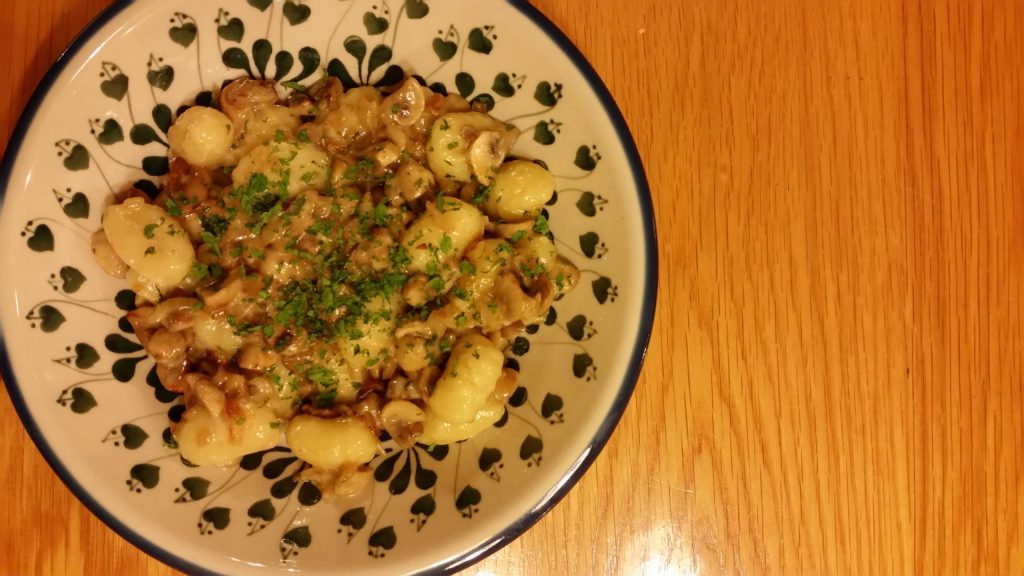This is a very easy recipe from ‘Dear Francesca‘ – it feels very indulgent adding all that butter, but the sauce is unbelievably tasty.
INGREDIENTS:
- One tin of tomatoes (I used chopped tinned tomatoes)
- A small shallot, peeled but not chopped
- 150g unsalted butter
- 1/2 tsp caster sugar
- A pinch of dried rosemary (a sprig of fresh rosemary is better if it is available)
- salt
- Penne pasta or gnocci – allow 60 to 75g per person
- freshly grated pecorino cheese
METHOD:
- Put the tomatoes through a mouli or sieve to get rid of the seeds. It is easier if you blend them in a liquidiser first.
- Put the sieved tomatoes in a small saucepan with the shallot, sugar and butter, and bring to a slow simmer. Put a wooden spoon in the pan and then put the lid on, so it is propped open a little. Keep simmering and stirring to reduce the sauce. Cook for 30 minutes
- When the sauce is cooked, take out the shallot, add the rosemary and season with salt.
- Cook the penne or gnocchi, and drain, pour over enough sauce and then add freshly grated pecorino cheese
